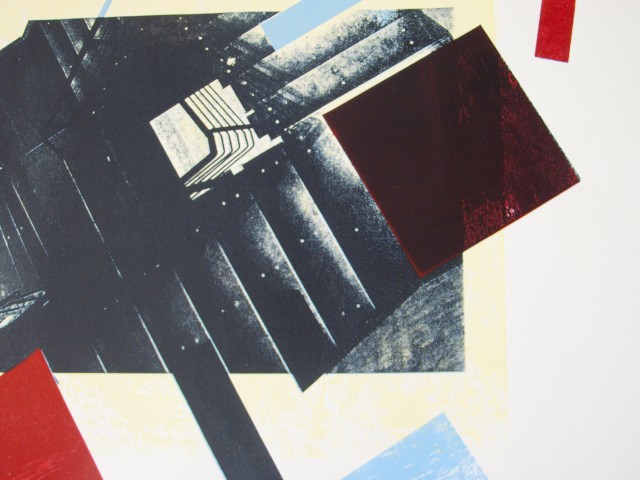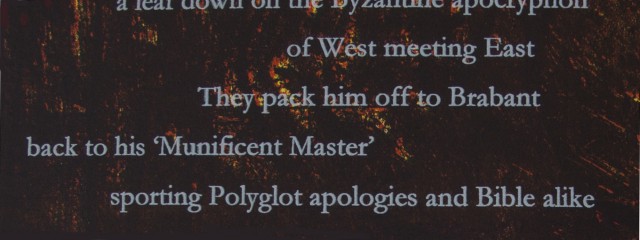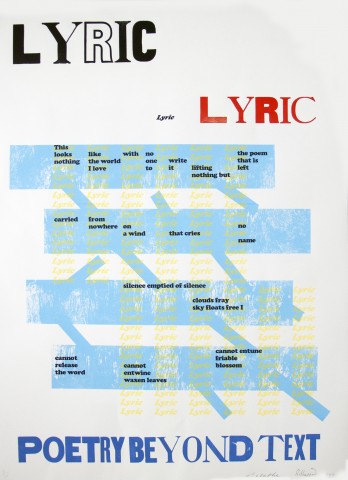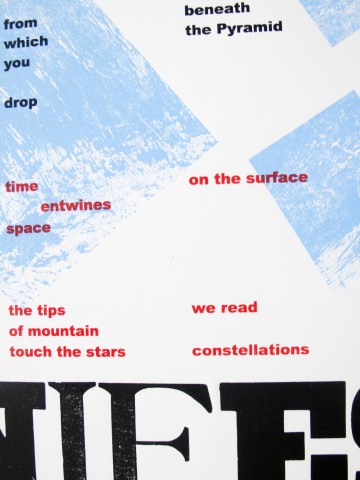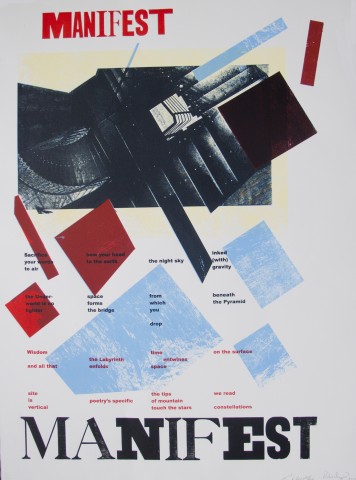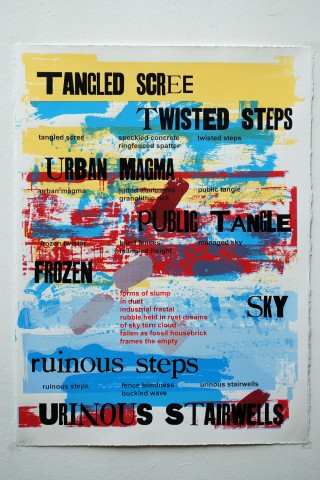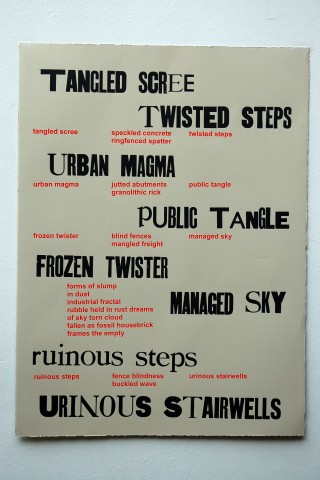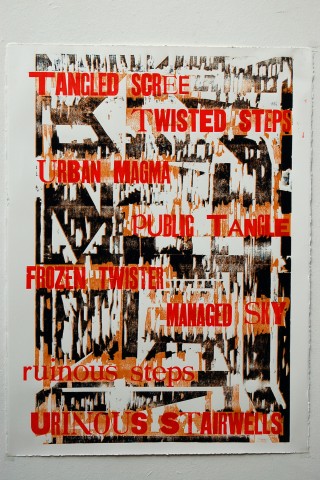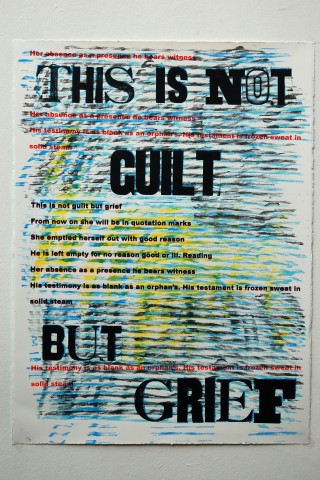Forme, Lyric and Manifest by Robert Sheppard and Peter Clarke
Each of these prints contains poetic text on various scales, some resembling ‘headlines’ or titles, others reading as fragmented and repeated ‘body’ text. There is a visual assembly of these component elements that is suggestive of Russian Constructivist prints, combining abstract colour shapes, blocks of text, and oblique angles and these historical visual influences interact with a ‘poetic of increased indeterminacy and discontinuity, the uses of techniques of disruption and of creative linkage’, to apply Sheppard’s own description of the ‘Linguistically Innovative Poetry’ movement in which he has played a notable part. The word 'manifest' teases the viewer with overtones of manifestos, of historical references and political activism in its dynamic layout. There are visual overtones as well of the dynamic aesthetics of Rodchenko and Popova, whose work from the brief period from 1917-1925 produced energetic and stylistically groundbreaking visual art with text.
This is Not Guilt, Tangled Scree
The text for Tangled Scree is a quennet (the near-sonnet, but haiku-influenced form invented by the instigator of Oulipo, Raymond Queneau). It was composed using some photographs which Pete Clarke took of some derelict sites in Liverpool, particularly with respect to the adjective-noun phrases that make up most of the text. Pete then designed the work using the text rather than the images. Indeed, one version is a text-only version, but others use colour to complement the language.
The This is Not Guilt and Tangled Scree series are a combination of silkscreen print with traditional letterpress. They attempt to create a visual equivalent for Robert's poems, thinking about visual tension in terms of compositional structure and fragmented surfaces. I collect letter type and the works use various fonts to try to replicate and or dislocate the patterns of speech. I am interested in the relationship between looking and reading, with the images and surfaces creating interference, a dialectical sense of images held somewhere between construction and falling apart.
Pete Clarke moved to Liverpool in 1978 after studying at Chelsea School of Art, West of England College of Art [Bristol Polytechnic], Burnley Municipal College and living for a time on the Isle of Wight and then London. He is MA Course Leader and Principal Lecturer in Fine Art at the University of Central Lancashire, Preston. He makes paintings, prints and installations, exploring collaborative strategies within contemporary practice.
Robert Sheppard, born 1955, developed an early interest in British Poetry Revival, and studied for an MA in Creative Writing at University of East Anglia, followed by a PhD. He was an active part of the alternative poetry scene in London before moving to Liverpool, where he is currently Professor of Poetry and Poetics at Edge Hill University. Publications include: Twentieth Century Blues (2000) and The Lores (2003).

